Notes for a Theory of Somatic Bodywork






Notes for a Theory of Somatic Bodywork
Edward W. Maupin, Ph.D.
IPSB MA Program, Advanced Seminar
September 29, 1998
What would be necessary for an integrative theory of somatic bodywork, one which would allow us to think about the major phenomena which an experienced, psychologically sensitive bodyworker is likely to encounter in the course of a few years of practice? Could basic concepts be networked together in a matrix of connections with which we could organize our experience in this work?
This ìtheoryî should have as its centerpoint the actual moment of tactile contact between bodyworker and client, and take off in radiating circles relating the psychological and energetic phenomena which come into view from that point. It should be orderly and clear. It should find links between phenomena which were not seen before. It should lead to new observations and, above all, to new questions.
It would not be an attempt to form a static picture of principles and eternal laws, but rather a collection of concepts in a matrix of relationships which shift according to the use that is made of them. In this case, the use is bodywork, and that determines our approach.
The danger of all somatic writing is to fall into idealizing generalities. It is well to have a practical focus. For this, I have used body alienation, a term which is contrasted with embodiment. Embodiment is a state of being aware of the present reality in which the body lives ?? breathing, position, gravity ?? regardless of other psychic processes which may be going on. Body Alienation covers a wide variety of dis-embodied phenomena varying from the ordinary preoccupations of thought or emotion to full withdrawals of various kinds. Since any disorder in the relationship of the person with the body in space and time involves all of psychology, the topic is useful in drawing together salient aspects of sensation and perception, object relations, energetics, touch, attention and consciousness.
I have largely omitted illustrations, thinking that my paper is directed toward a professional reader who would rather see the broad implications of an argument than be convinced by an ingratiating wealth of elaboration. Indeed, most bodyworkers have more than enough illustrations from experience, which are only waiting for a general scheme with which to give them order. Surely other readers, who are not bodyworkers, or even other somatic professionals, are waiting to see what we can say about this work.
NOTE:
[This is intended to be a THEORETICAL SPACE, rather than a theory in the old sense. It is a space of concepts, or conceptual clusters, which have various links with each other. The relationships within this space are determined by the experimental problems being brought to it. ??It is rather like a three-dimensional fishnet in which the concepts are the crosspoints of the net, and the relationships between concepts are the strings. If one looks at a fishnet through a fish-eye lense, particular nodes and connections swim into prominence according to the point of approach..
In this theoretical space are all the old concepts??attention, thought, movement, space, time, intuition, imagination, soul, emotion, attraction, pleasure and pain???all pulled together and "defined" again around a primary point of entry, the "moment of touch."
As much as possible the "definitions" have an embodied referent: (e.g.. 'soul' is what moves when "I am moved.") In a sense I am going back through psychology and attempting to re-ground its concepts once again in experience.
We don't need "truth" in any fixed sense, but only sensible dialogue with conceptual clusters that we have thought about. Such a webwork can accomodate a great deal of disagreement about particular points. Such dialogue simply serves to add more richness to the space: more concept-clusters, and more lines of relationship.
[ASIDE] With this entry point - the touch, the trialectics of touch, the
inner attraction, the point of response - all noted from within, becoming
experiential with energy - we enter the world of Becoming. (a la
Nietzsche) (Compare Bergson's entry-point, ëattention to duration.')
-- In other words, we're right on time with the basic projects of western
philosophy: freedom.]
The Somatic Epiphany, Embodiment, and the Goals of Somatic Bodywork
The somatic approach began, for many people, as a personal discovery of a different relationship with the body. Often this was a dramatic experience of the ëlived bodyí, rather than the ëbody-as-object.í This experience, which takes many forms, can be called ìthe body epiphanyî a revelation of a different order of reality.
The body epiphany leads many people to pursue this relationship with the lived body, so that, over time, they develop a sustained awareness of their physical presence in the here-and-now, a state which is known as ìembodiment.î
Numerous benefits have been identified with this increased physical awareness, ranging from psychological strength and self-responsibility, to improved health. Somatic Practices, including movement and dance, meditation, yoga and tíai chi, and many kinds of hands-on bodywork, may be characterized as aiming at initiating the body epiphany and developing embodiment. Embodiment shouldnít seem like an impossible ideal or a remote spiritual goal. It is simply a state of awareness of oneís body in the present moment, regardless of what else is going on in the mind or in the environment.
Awareness of oneís body: clearly the interior, proprioceptive senses are crucial: remembering oneís breath is a great comfort in times of stress. So is the kinaesthetic awareness of position and balance in gravity. Bodywork, then, must be able to enhance and stabilize these proprioceptive awarenesses if it is to help to produce embodiment.
My project is to develop a network of concepts which will be useful in understanding and working with the immense number of people whose experience is largely not embodied, and who might be helped by becoming more embodied. Body alienation becomes a broad concept spanning a large range of states, and a metaphor for approaching a great deal of human suffering. Touch communication, in this context, becomes a simple??formidable??means of constructive change.
I. The Moment of Touch
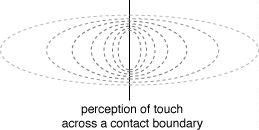
Either person in this touch experiment can influence the direction and depth of the touch perception by means of attention.
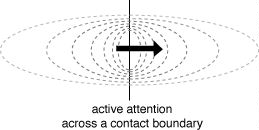
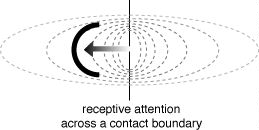
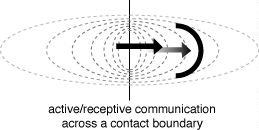
This is more or less what we naively expect in bodywork: the bodyworker is actively attending to the clientís body, whi ch is receiving the touch.
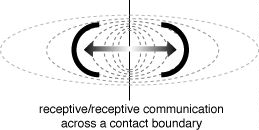
Both people can be receptive to the touch perception at the same time, as the diagram above indicates.
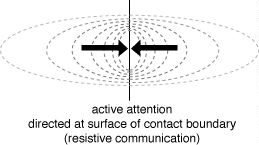
This diagram might illustrate a situation of conflict and resistance, in which both people are directing active attention at the contact boundary, trying to overcome (or withstand) each other,
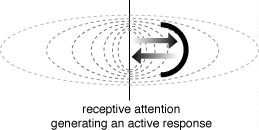
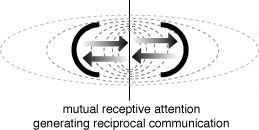
Further, the flow of attention, receptivity, and response may be accurately sensed across the skin boundary. With training, both partners can perceive the degree, quality, and direction of the other partnerís attention even without perceptible movement.
Touch and Energy.
These various modes of attention clearly alter the movement of sensation within the body on both sides of the contact. Perception is altered thus by attention, and many different introspective phenomena can be demonstrated. But these relationships between perception and attention become especially interesting if we speculate that the internal perception of touch, deeper than the point of contact, is actually electromagnetic energy. This ëvibrationí or ëenergyí which many people experience in touch, may be a perceptual registration of the movement of actual physical energy. If we are willing to take that step, for which an argument has been advanced by Oschman (1995) and Kagey (1998), then we are faced with a powerful implication: physical energy??not just thought??can be directed by the mind.
Some readers will not be willing to take this step, in which case we are still left with the conclusion that the perception of touch is highly directable by the attention, and may go far beyond the boundaries of the skin.
As noted earlier, the flow of attention, receptivity, and response may be accurately sensed across the skin boundary. Both partners can perceive the degree, quality, and direction of the other partnerís attention even without perceptible movement. How this can take place if touch is not energetic in the physical sense is not clear. If this is a perception of actual underlying electromagnetic events??if we are capable of feeling subtle energetic movements within another personís body??then a host of implications and possibilities arise.
Touch ;and Consciousness. The Principle of Awareness:
It is possible to take the position that one is not intending to touch the body itself, but rather the awareness within the body. Then one attends to how a contact is made, and with what. The touch is receptive, though not necessarily soft or receeding. The client, who is paying attention to the contact, meets it with physical awareness. This awareness is deeper than personal attention. It comes from the body, and it is organic. It is the sense which allows and directs change to take place in the body. In principle: Awareness Makes the Change.
What is the physical awareness? I believe it goes as deep, and is as ultimately undefinable as ìSoulî, ìImaginationî, and ìBeing.î
ìTouch to Knowîas basis for technique. If awareness makes the change, then the practitionerís strategy is to become more aware of what I am touching. There are various complex interactions between mine and the clientís awareness which can be understood as some kind of exchange of energetic information.
Training the Client to participate in touch communication.
As should be clear from the preceeding sections, touch is a complex communication between practitioner and client. How this communication is developed and attended is crucial to its success as a therapeutic tool. I systematically develop the topic in four steps:
(1) Attention to the touch contact. This is my initial instruction. If clients drift into thought or fall asleep I call them back. In remaining attentive and present to the touch contact they regain a deeper contact with each part of their bodies.
(2) ìDraw me in.î I use various images, ìlike a spongeî or ìlike a magnetî to suggest the attitude, the skill, I want them to develop. It is subtle, but receptivity is a feeling which must be conveyed.
(3) Use the touch to organize your own body. Once they have found the basic skill of receptivity, they can begin directing the touch to particular parts of the body which may crave for touch. Now they are not simply passive in the process, and we are embarked on the mutual, reciprocal communication of touch. In structural work, the client can use movement to work with the touch.
(4) Attending to pleasure. I ask, ìDoes this feel good?î and ìIs this interesting?î It is a way of eliciting a feeling connection with the touch. Many body-alienated people will sense their bodies without connecting feeling with it. Asking about pleasure is asking for feeling.
Body as Vibratory Volume
The senses are not perceived separately at any time, but merge into an experience of self and environment. In the touch communication modelled above, the body becomes a perceived volume, a vibrating interior space. Touch, an ìexteriorî sense, is used to access a whole range of internal (ìproprioceptiveî) awarenesses. Sound is also an external sense, and it can be used to access proprioception in much the same way. In fact, sound is a good analogy for the way the relaxed and open body feels inside. The interior volume may also be a visual arena, in which lights are seen and images move. Dreaming takes place within this volume.
The vibratory volume is bounded by sensations of tension. Ones characteristic sense of self is ìshapedî by these tensions. When they are released, there is more internal awareness of the vibrating volume.
It is worth repeating that the feeling within the interior volume can be directly influenced by attention, and that this may parallel actual changes in electromagnetic phenomena.
II. Some Psychological Concepts
A. The Field of Awareness (or the Field of Reactivity)
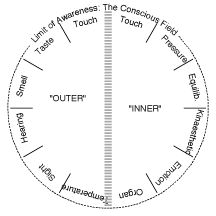
Consciousness consists of that portion of the total awareness of which the subject can be reflexively aware (aware of being aware). At any moment, much of it remains ìPre-consciousî. Attention is focussed awareness, within the broader area of potential consciousness. These ìtopographicalî relationships may be represented this way:
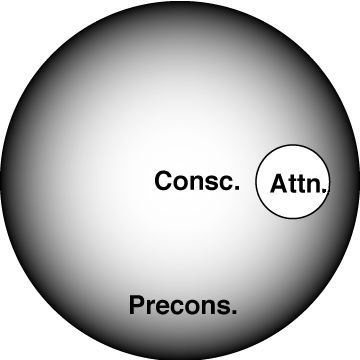
It is vitally important to remember that Consciousness is taking place in the Here-and-Now.
Because the field of awareness includes not only perceptions of sensations, but also ìrepresentationsî (thoughts, remembered sensations, and so forth) the conscious psychic process moves away from the here-and-now physical present of perception in various ways. This movement away from the present moment occurs because of the nature of thought, which is capable of representing past, future, and various degrees of abstraction, and because of the nature of feeling, which associates different representations according to affective similarities. Thus, the point of attention moves between several diffent polarities:
(1) between external and internal perception
(2) between present time and past or future
(3) between concrete and various degrees of conceptual abstraction
These possible relations with the physical present can be represented this way:
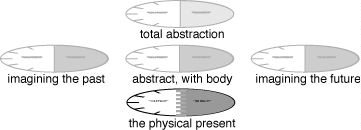
C. The Senses convey energy and movement outside and inside the organism. This information is always in the temporal present
1. The External Senses convey energy and movement from the environment into the psyche. Sight, Smell, Taste, Hearing, Touch, Temperature, and Pressure are usually listed as external Senses
2. The Internal Senses convey information about the state of the internal body, its position in gravity, and its emotional and visceral events. Kinaesthesia, Equilibrium, Temperature, Touch, Pressure, Organ Senses, Emotional Senses compose internal sensation, which is complex, and involves many different types of receptors.
D. Perception. The Senses are not experienced directly, but are organized and interpreted by a psychic process called ìPerceptionî which is learned. Thus every perception is to some extent an experience of the past.
E. Attention is a learned faculty which brings into focus particular areas of the field of consciousness. Not all areas of consciousness are equally accessible to attention. Attention is closely related to the will, and is the faculty which is most free. This freedom must be learned.
F. Feeling is distinct from sensation and perception in that an evaluation is placed upon the percept. That is, some part of the core being connects with the experience and evaluates it. Pleasure is not a sensation, but a feeling. Feelings are body feelings.
G. Intuition can be usefully defined as ìattending to durationî (Bergson). This distinuishes it from thinking, which jumps from the present moment to a conceptual abstraction from it. Intuitive bodywork, then, is characterized by a sustained attention to present process.
Intuition is freed, by this operational definition, from the implication of some special intrusion from some beyond the beyond. The ëintuitive insightsí which may arise in the midst of ëattending to durationí might be more usefully called ëimaginal insightsí or products of the imaginal process.
H. Imagination is a faculty as difficult to define as it is important for understanding the human process and somatic bodywork. Summarizing authors as various as Coleridge, Blake, Jung, and Ibn Arabi, we might say the following:
1. Imagination is the way the body thinks. That is, it is organized from a deeper center than the conscious awareness. Dreaming is an expression of imagination.
2. Imagination uses sensory images to convey deeper meaning. That is, it is sensory and body-involving rather than cognitive. ëPreverbalí meanings are often encased in sensory or verbal images.
3. ëMeaningí, in the sense of ëfelt significanceí always implies that a core level of the psyche is engaged. Meanings must be represented in sensory imagery in order to be perceived. Many elements of meaning, (Jungís ëarchetypesí, for example) are independent of any particular representation.
4. Imagination is sometimes expressed in strong visionary experiences: that is, a multi-sensory imaging process which may be profoundly impelling. The entire body may be involved in such a visionary experience. Jung: ìonly the imagination can experience God.î
5. Since traumatic or emotional memories are often recovered in an impelling, multi-sensory, non-cognitive way, we can ask whether such experiences are also expressions of the imagination.
6. Different qualities of imagination. Imagination, the process of thinking with sensory images, clearly refers to a wide range of mental activities, ranging from the ìprimary processî (Freud) thinking which is entirely organized by the wish for pleasure, to complex integrations of subtle sensory cues, to fully integrated creative processes, to visionary experiences of the highest order.
7. Origins: some authors consider that imagination arises from the body or the deep psyche. Others consider imagination to be a bridge between the Divine and the personal. Ibn Arabi: God reveals (him)self through meanings which are, in the human mind, clothed in sensory images. God creates everything by imagining it. We are being imagined. Some of what we experience is coming from the other side of the bridge.
As with the question of feeling electromagnetic events, the question of a transpersonal source of (some) imagination can be resolved in favor of a purely intrapsychic origin. But then it is hard to account for the more extreme experiences of imagination, such as the mystical union, solely in terms of some ëhard-wired potentialityí of the nervous system.
It is necessary to acknowledge different levels/forms/sources for imaginative contents.
8. Imagination and Intuition. If intuition is a mental faculty which attends to duration, then the content??what is usually called an intuitive insight??could be a product of imagination. Imagination organizes information from many sources, including perception. Intuition, by forstalling conceptual ëclosureí on experience allows imaginal information to come in.
Thinking works with different kinds of images: derived from vision, from kinaesthetic sensations of balance and volume, from hearing, taste, smell. All these may be manipulated and, being images, or representations, they are not present experience itself.
There are images derived from feeling and hence feeling-oriented thinking. Although feeling itself is a here-and-now process the images derived from feeling are not. Let no feeling-oriented person critique someone who thinks in other images for ëthinking too muchí: feeling-oriented thinking is just as removed from here-and-now experience as any other.
There is a special kind of thinking which works with words, and the concepts which language has formed. This verbal-conceptual thinking represents a step further away from experience from sensory images. Language has already broken down the infinite flux of reality into recognizable elements. Cause, effect, self, other, and a host of other forms are already structured by language.
Thinking implies action. Nothing is relevant to us which does not involve us in some kind of action. Motoric images are an important part of thought.
One important portion of thinking seems actually to emanate from the throat as ësubvocal speechí. We are always explaining. The action is to explain. This speech comes into our thoughts, because language is thought (though thought is not always language).
There are different qualities of thinking, based on different kinds of logic. The logic of an educated person in 1998 is different from that of one in 1950. Informatin is organized differently since the psychedelic insights and since the onset of television (the message of the media is a different organization of imagery). The conclusions of thinking may be evaluated by the quality of logic which led to them.
Obviously thinking is related to imagination. Imagination is the way the body thinks. All thinking manipulates images. Not all thinking is imaginative (receptive to deeper sources of meaning). Perhaps thinking is a level of the imagination which is susceptible to will in various degrees.
J. Emotion, Affect: call it a storm on the sea of feeling, a physical reaction occasioned by pain or pleasure. E-Basic negative ones: Fear, Rage, Sadness. Natural reactions when vitality is thwarted. Can be considered alternative forms of expansive vitality and joy??that is, the same energy expressed in different ways.
The three are generally together in layered forms in an emotional reaction. Objects and occasions evolve with maturity. Memory strong element in emotional experiences.
Since many bodyworkers consider that they are releasing emotional distortions in the body, it is worthwhile to attempt some distinctions.
1. Repressed Emotion is pushed out of consciousness, but more honest introspection can bring it to light to be talked about.
2. Preverbal (Early) Emotion is not pushed out of consciousness: it is in a form which canít recognized and verbalized by the maturer consciousness. Most preverbal emotions evolve into maturer forms, but traumatic or fixated emotional memories may remain held, or stored in some fashion, in the body. These can remain in static (physical) form, or, when stirred, can cause a range of effects, physical, behavioral, emotional, or mental. Because they are preverbal, these emotions often express through the body long before they reach verbal consciousness.
3. Overwhelming Emotions cause the self-structure of the person to split. They are so immense, or so frightening, or so unknown they cause a fragmentation in the sense of self, and of others.
Parents have the task of protecting infants from being overstimulated (overwhelmed) by their internal emotions until they can maintain their own equilibrium. When this has seriously failed, splitting of some kind takes place when the old emotion is stirred.
Certain kinds of psychosomatic expressions, such as self-attacks by the auto-immune system, seem to be manifestations of a similar splitting, between person and body.
K. Pleasure, Eros, Sexuality
Pleasure is good feeling in the body. When the body perceives something which would give it pleasure, it moves toward it with desire. The object of desire appears beautiful. The feeling of that beautiful is Eros.
Eros is the sweetness of attraction, anywhere in the body, at whatever level of refinement. Eros is the dance between the urge and the object. Any part of the body can have its urges, its movements toward pleasure. There is kinaesthetic eros, heart eros, sexual eros, intellectual eros, soul eros.
Eros and Beauty are closely related.
Eros and Energy are closely related.
Sexuality is a genital focus which develops within the larger field of eros and pleasure.
1. The Expectation of Pleasure leads to opening in the body. Receptivity. Like a sponge drawing in water, or a magnet in a world of magnetism. Opening implies an ìinnerî space. This inner space is ultimately a core component of expanding into the world. Vitality is expansive.
2. Fear, Contraction. The fear reflex exists from the moment of birth in a reflex against falling. That contraction, characteristic of the species, is basic. We can speak of the Expectation of Pain, or of Fear. Fear is motoric.
This contraction of fear stands in a vital, basic relationship with the fundamental expansion of vitality.
a) Fear accumulates as contractions, one upon the other, forming areas of soreness and congestion. We need a term for this tissue congestion.
L. Movement can only be conceived as separate from sensation by an artificial distinction. In actuality the two are completely interwoven. No sensation is relevant which does not have movement implications, no movement occurswhich is not involved in sensation. Thus it is impossible for somatic bodywork to ignore movement.
Movement is occurring as long as there is life.
Different forms of somatic bodywork make use of movement in different ways. Some are in continual interaction with the movement of breath, or with deeper ëfluidí movements within the body. Some ask for volutary movement on the part of the client. Some work with movement alone, without touch.
1. Dynamic aspects of Movement. Movement may be categorized along various dimensions of activity/ receptivity, as well as the degree of voluntary/subvoluntary initiation and participation on the part of the subject. A diagram of such relationships might look like this:
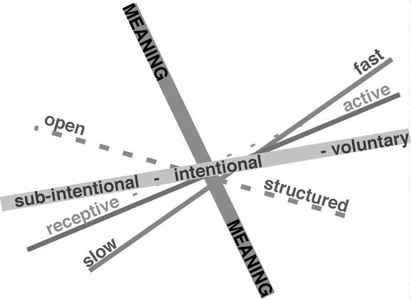
In the course of a bodywork session one might ask, say, for a structured movement of the knee, carried out slowly, with a great deal of receptivity to sub-intentional elements. Or, an improvisational (intentional) movement, sometimes of great meaning, might emerge from the client in response to the contact.
2. Structural aspects of Movement. The relationship between movement and structure is complex and important. First, the very structure of the body has evolved to permit movement in 3-dimensional, gravity-oriented space. Second, the habitual functions of movement, whether efficient or inefficient, come to form the structural organization of the body. This includes the chronic tension resulting from fear/contraction.
Structurally efficient movement can then be used to re-organize the structure of the body for movement in space.
3. Expansion and Contraction A fundamental difference exists between a vital, expansional system of movement which is open to sensory interaction with the outside world and a contracting system of movement which is based on fear and the need to control. This contraction is also known as inhibition.
4. Types of Movement. What is being inhibited? It is possible to distinguish a few fundamental movements of which the arms, legs, head, and pelvic floor are capable. These are pushing, reaching, grasping, and drawing-in, and they appear, developmentally, in this sequence. Some movement therapists (Aposhyan) are able to make extensive use of each of these movement in each of the body parts, in working with clients.
Pushing, as it first appears in the infant, is pushing out, expanding the legs out from the pelvic girdle, for example. It is about expansion and defining limits of the body.
Reaching is of particular interest in opening up the body, because the movement inherently involves the imagination of an exterior object or space: reaching, as opposed to pushing, always involves what is being reached for. The hand reaches toward an object, the heel toward the ground, the crown of the head toward the sky, even the pelvic floor can consciously reach toward the earth. The movement goes outside itself, and therefore involves an opening of the body beyond itself.
M. Sensory Balance. Individual consciousness is strongly influenced by the relative dominance of various senses. The Field of Awareness may include or exclude input from specific senses in the process of perception.
1. Vision is frequently over-dominant in people who are body-alienated. Usually, in somatic therapy, we are working to supplement vision with attention to other modalities.
Vision seems to be closely related to analytical thinking, which, like vision, breaks things down into separate objects, andmay grasp only the surface of things. Vision can become very dominant, to the exclusion of internal awareness.
It should be noted that vision is involved in a great deal of thought. The neo-cortex, which appears to have evolved in primates as an organ for perceiving space (especially in the coordination of hand and eye), becomes, in human beings, an organ for generating imaginary spaces, that is, thoughts.
2. Hearing, although a distance reception similar to vision, has very different perceptual relationships.
Hearing seems to have close relations with the interior senses: it can be used to heighten interior awareness, for example, by ìlisteningî with the body. A full sense of embodied presence includes a vibratory sense of the interior of the body.
The obvious relationship between hearing and feeling, as in music, is another indicator of hearing as an access to interior perception.
Thinking which arises from hearing (as in the ëmusical intelligenceí) tends to detect patterns-over-time rather than discrete relationships. Another type of thinking which is also related to hearing, but in a different way, arises from subvocalizations which can be measured in the throat and are experienced as verbal thoughts.
3. Voice and Toning. Voice must be considered from its sensory aspect as well as the motoric. First, the vocal apparatus can sense vibration as well as emit it. Second, the experience of vocalizing is a two-way experience of sensory exchange with the external world, one which, under certain circumstances, can open up transpersonal experience. The ability or inability to express oneself verbally influences a personís fundamental being in the world. This may involve tension and disorganization in the mouth and throat which can be addressed with touch. Third, vocalizing, especially with toning rather than speech, vibrates the inside of the body, opening up closed areas, setting in motion vibrational states, and influencing the vibrational experience of the external world.
Toning. Toning, of course, deserves far more consideration beyond these few sensory considerations. Its practitioners have been prompted to describe mantra and seed-sound in the most transcendent terms: of Logos, and of worlds beyond worlds, and their creation. But these lie beyond our specific purposes here.
4. Touch, is an exterior sense, but it also offers an important entry to internal feeling. Obviously it is experienced within, rather than only on the surface of the body. When touch and pressure are used to uncover tightly tensed and sore areas in the body, it can be used to extend the area of open (proprioceptive) sensation in the body.
The sense of touch may be excluded in body alienation, as in mild numbness, or by not investing feeling in the experienced sensation.
5. There are other special relationships among the senses. Smell and taste, for example, have close associations with internal senses of visceral organs and emotions.
6. Six Sensory Surfaces. Sensation ìfeedsî the interior of the body. The interior feeling of vitality is an interaction with sensory input from the outside. The brain is organized, and its organization maintained, by sensory input. It is interesting to note, though, that most stimulation comes from six areas of body surface: the face (eyes, ears, smell and taste), hands (palms), feet (soles), and the pelvic floor. Other portions of the bodyís surface contribute but little to the overall sensory experience.
Clearly, blocks in any of the sensory surfaces profoundly influence the rest of the body and psyche. Observation: when elderly people withdraw, they seem to do so with their hands and feet. Observation: blocks in vision (tension in the eyes) influence awareness.
Since the palms and the soles are the ultimate contact-points of the limbs, the arms and legs cannot be organized without reference to these surfaces. The load which improperly organized arms and legs place on the torso cannot be resolved by work on the shoulders and pelvis alone. And, finally, the torso cannot be organized without resolving the effects of contraction in the limbs. This constitutes a critique of Chiropractic theory.
The importance of the six sensory surfaces for the interior state of the body offers promising leads for somatic bodywork. Touch communication with the feet and hands can circumvent many difficulties, although existing theories of analogies with the rest of the body seem overly literal.
Contact organs of the face are receiving increased attention from senior practitioners (Lowen), and seem to offer important possibilities for personal expansion.
a) Somatic Experiment: Audition Plantar (from Arica): ìlistening with the soles of the feet.î Can be done, for example lying with feet toward the speakers while listening to music. It is effective in opening the connection of the feet outward, and at the same time brings felt vibration inside, as if the feet were, indeed listening. As if the natural sense of the feet were a kind of ësonarí akin to hearing. As if the body lives in an auditory world, and vice versa: an auditory world within the body. (ìan immense world of delight. . . ì)
III. Object Relations.
One aspect of the psychic process which has particular importance is how one relates to other people. This is learned through early interaction with the environment in a series of developmental steps.
Lawrence Hedges (1984) integrated the many lines of psychoanalytic research into object relations and their role in developmental psychopathology into four ìlistening perspectivesî based upon four stages in the development of object relations. People manifesting severe psychopathological states may be struggling with unfinished business in one or another of the stages. Even in less disturbed people, the different aspects of relational behavior which develop from the four states require a different listening approach.
The stages develop Contact, Intimacy, Independence, and Reciprocity, elements which unfold successively, but which are current issues in all human relations, like four notes in a chord. We use them all the time, and most ordinary people display disruption and conflict in each of them, at least some of the time, for which of us has no anxiety or conflict about making or being in contact, or about entering and withdrawing from Intimacy, and is thoroughly self-reliant, and always fair and equal?
A. Organizational Level (Contact). (1) Developmental: until about 4 months of age the newborn infant is reaching out to make contact in a variety of ways. Some ways are rewarded, others are ignored or punished. A webwork of contact ëtendrilsí is established??or else the infant fails to thrive. (2) Pathology: When the net of connections is minimal, and fraught with pain or met with indifference, the organizational level struggle continues. This is manifest in psychoses or in pathological states in which a person has not bonded successfully with a parent. In such cases it is dangerous for a therapist to make contact without first clarifying terrified resistances which may be operating. (3) In more normal individuals, the contact level is apparent in ordinary patterns of reaching out for, or avoiding contact.
B. Symbiotic Level. (1) Developmental, 4 to 24 months. The infant bonds with the mother in a symbiotic union which involves merging, ìbecomingî the other. An entire world of interpersonal games and maneuvres is evolved here, which give rise to rules and expectations about relationships in later life. Ambivalences about committment or involvement involve this level. (2) Pathology: The symbiotic level may be prominent in Borderline disorders characterized by terror of abandonment, and accompanied by strong transferences of ìall-goodî or ìall-badî projections onto the therapist. (3) In normal life, the symbiotic level gives rise to the ability to achieve real intimacy characterized by deep, empathic contact. It also reveals its presence in conflicts about intimacy, intense sentiments, attachments, and emotional reactions.
C. Emergent Level. (1) Developmental, 24 to 36 months. The toddler is emerging from the symbiotic union and requires attention from other people which validates his/her independent existence and self-worth. (2) Pathology. This self-centered preoccupation is called narcissism in people who remain stuck in this way of relating. Recent psychoanalytic theory (Kohut) has emphasized that a ìself-structureî is being built in this stage. Individuals who remain narcissistically preoccupied are struggling for self-validation to maintain a self-structure which more normal people can take for granted. (3) In normal life , ìhealthy narcissismî is an essential component of self-esteem and confidence in normal functioning, but is supplemented by reciprocal, two-way relational skills.
D. Triangulation Level. (1) Developmental. 36 months to 6 years. The child arrives at the ìOedipal Stage.î In Freudís scenario, the little boy wants to possess the mother and eliminate the father, but, in fear, comes to identify with the father and renounce his wish for the mother. A more general reading represents this as a more complex discovery of other people in the world. All of our relationships are triangular, in that they are experienced with other people in mind. Reciprocity and two-way relationship gradually develop.
E. Using Object Relations Theory in Bodywork. The bodywork situation is a laboratory of relationship with the interesting characteristic that touch replaces much of the verbal-social interaction.
1. It is possible to note disturbances in contact (organizational level) and sometimes to ease these difficulties by touch interactions which circumvent the in-your-face personal issues.
2. The symbiotic level can also be noted and the abandonment issues reassured by touch while avoiding too much involvement in the clientís transferred social needs. The touch communication is itself based on the merging and intimacy skills of the therapist, and teaching the client to participate may be relevant to conflicts and anxieties at the symbiotic level. Since bodyworkers only rarely run into trouble, this seems generally to be a non-threatening approach to intimacy.
3. The emergent level, especially as it persists in narcissistic preoccupation, is a particularly promising area for the application of bodywork. While the client may be striving for self-validation through fruitless and repetitive behaviors, the touch of the therapist may succeed in giving validation through the body which satisfies the need and aids in the development of the self-structure. A clearer sense of physical presence, a more organized and coherent body, may be an effective component of more stable self-functioning.
IV. Metaphor 1: Soul, Core. ëSoul refers to what gets moved when I am moved. From deep experiences, for example, of love and sorrow, I come to know there is ëthe really, really meí which is not the result of thought. The sense of meaning, or significance is related to Soul and indicates the involvement of this level. Since the experience of soul is related to the pure process of being, its experiences are related to duration and timelessness. When one falls in love, for example, the experience is filled with Meaning and edged with eternity, it seems ëforever.í
Core is a related concept, but may have much more physical referents, such as the core of the body, the core-feeling of a limb, the core movements of receptivity, and so on. Core experiences are similar to soul experiences, and one can increase access to soul experience by organizing the physical core.
What is needed is some distinction between an external, ëfrontalí being, constructed conceptually out of interactions with the external world, and an interior sense of being which is a non-conceptual presence.
A. Evolution in the Experience of the External World
Three general types of experience of the external world may be distinguished. In the earliest, no distinction is made between outer and inner. Various transactions between part-self and part-object take place which are not organized in an overall way by the psyche. This corresponds to an earlly infantile stage.
In the second, which corresponds to the most general way in which most people perceive, there is a marked differentiation between outer and inner. The outer is perceived ëthrough openings in a caveí (Blake), the outer seeming more ìrealî than the inner. This corresponds to an over-valuation of the frontal being, and a relative neglect of the core self.
A third stage, representing an advanced development, involves a return to experiencing the outside from the core. Both outer and inner realities are experienced as an integrated unity which is perceived from within. The interior is experienced as the field of this perception. The subjective pole is never lost in the experience of objective reality. Blake: ìevery bird that cuts the airy way is an immense world of delight, closed by your senses five.î
B. Images for Accessing the Core. Since ìCoreî refers literally to the internal experience of the body, various images can usefully be employed to develop awareness of core.
ìChakrasî are centers in the body arranged, generally, around a central axis.
ìThe Lineî is an image to which Dr. Rolf gave central importance: a line from the center of the pelvic floor through the center of the crown of the head, around which the major segments of the body could be allowed to balance. It is important to think of The Line as an interior, proprioceptive image rather than an exterior, visual image. In attempting to make oneís body adhere to a visually straight line, rather than finding an interior set of balanced relationships, one can actually interfere with the feeling of open balance. Applying an external, visual standard can be an example of ìsomatic Platonismî (Johnson).
V. Metaphor 2: Inner and Outer. These inner and outer metaphors pervade thinking about psyche and body. Here are several examples:
A. Internal and External Senses. Subjective experience distinguishes what is inside the body from what is outside. [A spacial diagram of this runs into trouble, because the outer limits of awareness include not only the outer limits of the awareness of the outer world, but also the limits of awareness of the inner.]
B. Ego and Essence. This is a re-stating of the soul-frontal being concept. It refers to the experienced distinction between the ìIî and various experiences of more intimate being. The outer being is conditioned, learned through various interactions with the external (and internal) world. The inner being is unconditioned existence: pure being, beyond effective conceptualization.
This is a distinction between ìdoingî and ìbeing,î or ìbecomingî and ìbeing,î or ìtimeî and ìeternity.î
C. Rolf: ìSleeveî and ìCoreî, Intrinsic and Extrinsic Muscles. This model distinguishes between an outside layer of voluntary action, contracting muscles to carry out conscious movements, and an inside layer that relates by reflex action to position the body in gravity. This action is largely expansional, and it is non-voluntary. One ìdoesî with the extrinsic layer; one ìletsî the action of the intrinsic layer happen.
This distinction between ìlettingî and ìdoingî is also the distinction between receptivity and activity, yin and yang on the level of action.
Dr. Rolf speculated that the two layers carry different electrical potentials so that the body functions somewhat like a battery. This, and some concepts she advanced about the energetic properties of gravity, are relevant to the discussion of electromagnetic qualities of the body. (See below.)
D. Reich: Armor (outer) and Core (inner) This is a physiological metaphor for defense involving actual contraction against the flow of feeling and the expansion of energy in the vital core. Reich theorized about sympathetic/parasympathetic interactions of the autonomic nervous system as underlying causes of armor and core.
1. Political Implications of the Defensive Process. Reich realized that the defenses against impulses could harden into a negative stance toward Life and Vitality which had political implications. The same ìemotional plagueî which cripples the living of an individual can be projected out upon other people and upon the political process itself. This represents a creative beginning for a study of links between body and social process.
E. There are vast cultural differences in how the inner being is valued. Classical Western religious thought, based on the concept of ëoriginal siní has viewed the inner being with considerable distrust. Oneís ënatureí is the seat of error. Humanistic Western thought has been more optimistic in viewing the inner being as the source of creativity and redemption.
A. Three ìBodiesî inhabit the same space: the physical body, consisting of the myofascial, skeletal, and visceral organs, the emotional body, consisting of the entire circulatory system, and the mental body, consisting of the brain and nervous system. Each of these ìbodiesî gives rise to a different kind of psychological experience.
B. Three Intelligences. The Mental Body gives rise to the Analytical Intelligence. The Emotional Body gives rise to the Analogical Intelligence, interpreting experience in terms of emotional similarities. The Physical Body gives rise to the Empathic Intelligence, based on the ability to ìbecomeî the object of perception.
1. There is some indication that the analytical intelligence is particularly influenced by the visual sense, that analysis breaks reality into separate parts seen in relationship similar to vision.
2. The Analogical Intelligence uses similarities in feeling and emotion to make analogies. A sense of emotional similarity is obviously useful in protecting an organism from danger. Emotional analogy also seems to be the basis of symbolism used in the dream process.
3. The Empathic Intelligence is based on the ability of the body to identify and ìbecomeî the object of perception. This draws on the internal, kinesiological clues.
C. Three ìInstinctsî more or less correspond to these bodies (although it is more exact to note that the three instincts are experienced differently in each of the three bodies). These instincts are Conservation, Relations, and Adaptation (Syntony).
The ìinstinctsî are in-dwelling, physical questions: ìhow am I?î, ìwho am I with?î, and ìwhere am I? - whatís happening?î They must be continually answered, or else pain results.
These ìInstinctsî do not require a biological metaphor. They exhaust the possible dimensions of phenomenological experience. There is only the self, the other (all possible others), and the surrounding environment. Thus:
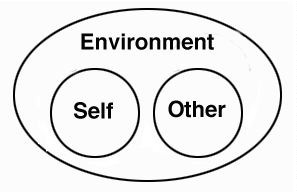
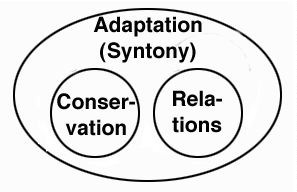
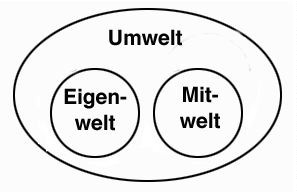
VII. Metaphor 4: The Will to Power
ìWhat Is Being?î Fredrich Nietzsche (d. 1900) resolves this ultimately important philosophical question by concluding that the fundamental nature of being is ìthe Will to Power,î that is, the will to be what one is. In the case of inanimate objects, or molecules, etcetera, that will is not especially dynamic, but in the case of a cat, obviously the will is more or less irresistable, at least by cat owners. In a human being the will to power may be compromised by a great many socially conditioned restraints, internalized conflicts, and plain misunderstandings.
Although Nietzscheís ìwill to powerî at first may seem wierdly Teutonic or vaguely proto-Nazi, it deserves closer attention. Power does not necessarily mean power over others; it can mean simply the power to be oneseíf. One might speak of the will to live or the will to be, but neither of these have as dynamic implications. It also deserves attention simply because of Nietzcheís influence on Freud, Jung, Perls, and on the fundamental trends in European philosophy which are relevant to somatics.
What does ìwill to powerî mean in practical terms? If being is characterized by ëwill to powerí, then the failure of power is movement toward non-being and ultimately death. Will to Power can be observable: little bursts of vitality are visible as people break through barriers to their will to power. This vitality is deeper than personality. It may not be conscious. Ultimately, the polarity between fear/contraction on the one hand, and expansional vitality on the other, may be best understood as viscissitudes in the will to power ??rather as if the person were a balloon, pushing to expand, or pinched by circumstances. The air in the balloon is vitality, which is, of course, deeper than conscious will.
A. The Will to Power and Physical Structure
VIII. Body Alienation is a state in which the normal movement of the psychic process is disrupted so that the physical present ? awareness of internal perception, occurring in present time, experienced concretely ? is obscured.
A. Causes of Body Alienation are various
1. early traumatic memory, such as parental violence, establish patterns of ìleavingî the body.
2. the feelings and reactions of the body have been systematically devalued or ignored through social training. They simply are not regarded as important parts of the psychic process.
3. embarrassment or shame about the body cause a pattern of intellectualization to avoid being physically present. Sexuality or Aggression may be treated this way.
B. Methods of Alienation are also various
1. ìDepersonalizationî and out-of-body defenses
2. Externalized attention which ignores internal perceptions.
3. Retreat into Intellectualization
Treatment of Body Alienation
Using Body Alienation as a practical focus for theorizing about somatic bodywork, we can draw variously on the different concepts outlined above. Is the client removed from here-and-now physical reality? Does he leave the present to go into abstract thinking? emotional ruminations? the past? the future? Does she actually ìleaveî the body, by becoming numb or becoming an onlooker? What is the clientís primary level of object relations? Is he fearful of or unable to make contact? preoccupied with symbiotic longings and emotions? striving for self-validation? Is the experience of self and world showing signs of fragmentation? What is the sensory balance? Is the client visually dominant? what senses are left out? what can be used to access internal physical perceptions?
How is all this accomplished? By fragmentation? By selective inattention? By sensory imbalance? By abstraction or fantasy?
A. Redressing Sensory Balance. Body Alienation is often accompanied by a strong imbalance in the senses. Often vision is accentuated to the exclusion of proprioceptive cues. Touch, Sound, Movement may be used to re-access an internal sense of the body.
B. Attention to Pleasure. Frequently the alienated body is not benumbed (i.e. sensation is present) but rather the feeling function is withdrawn. Questions like ìdoes this feel good?î, ìis this interesting?î help the client to re-attach feeling to sensation and thus reënter the body experience.
C. Object Relations Issues. The bodywork situation may also focus on object relations issues which motivate the alienation. Traumas which lie at the basis of severe body alienation are likely to involve ruptures in object relations. One avoids present experience especially by blocking very important aspects of human-contact within it. Hence a careful attention to the clientís relational patterns is a promising approach.
D. Object Relations plus Sensory Balance The combination of both approaches seems especially promising for treating body alienated clients. There is an obvious interplay between the two: various sensory organizations enable the alienated client to defend or avoid in relational contexts.
Touch makes contact without directly challenging personal, verbal, or eye-to-eye defenses. It may be possible for an alienated client to accept contact in this form.
The limitation of touch, of course, is exactly that it does not engage the more conflicted boundary issues. It can be used together with eye-contact in certain applications. Certain psychologists who work with severely out-of-contact people suggest that eye-to-eye contact (ëtraspassoí) is necessary to access neural centers involved in emotional imprinting and bonding in early childhood. They make use of touch, however, very much as part of the sensory communication in their sessions.
IX. Energy and Perception
I have delayed a more thorough discussion of energy, because it is not strictly necessary for a practical approach to touch communication, and especially because it is historically difficult to discuss the topic without being dismissed as irrational and unscientific. From Mesmer through Reich, history is full of intelligent and sensitive people who have tried to reason about their energetic experiences??and have been ignored, ridiculed, or even persecuted.
Recent biophysical research has made it clear that many components of the body are generating electromagnetic energy. At the tissue level this is true of the fascial system which, like an organic crystal, develops differences in potential when it is compressed. It is true also at the molecular level, since protein molecules are crystal structures which also develop minute electrical charges with compression. Every step, every breath has electromagnetic effects. The entire volume of the body must be a complex sea of electromagnetic event. Is all this just a separate level of phenomena, basic perhaps, but irrelevant to what we perceive?
Some of the bodyís electromagnetic effects are quite powerful: the pulse generated by the heartbeat (EKG) can be measured as much as fifteen feet away with proper instruments. Theoretically, the pulse continues through an infinite field.
On the experiential side, we have discussed subtle perceptual interactions in the touch communication in which the flow of felt sensation can be altered with attention, and that intention can be directed toward levels of the body which are not directly palpable and nevertheless have definite effects. The bodyworker often seems to know where to go in the clientís body based on awareness which is difficult to explain.
Organized perceptions, images and awarenesses are exchanged. Is this simply empathy? Some kind of emotional ability to ìvicariously experienceî the introspection of another person? Or is the internal feeling of the body??and between bodies??perception of actual electromagnetic events?
Are we, in our complex electromagnetic states, functioning as ëreceiversí for electromagnetic information? What would be the sensory receptors for such information? How is it encoded and transmitted? Is what I feel inside your body, deep beneath my hands, my perceptual transformation of electromagnetic signals you are actually generating?
And how about the feeling of the body in general: is it electromagnetic perception? Tension in the body blocks the flow of feeling and awareness. When areas of tension are significantly released, the interior of the body may be felt as a vibrating volume, the vibration being somewhat analogous to sound, although it is silent. Then we say the body is ìopenî and its external barriers are reduced. Is this an actual increase in the permeability to electromagnetic flow? Is ìanimal magnetismî (Mesmer) ërealí (related to material phenomena) as well as perceptible?
H. P. Kagey has produced a model whereby certain concepts of ìChiî (Chinese concept of internally perceived energy) and its development might be understood as actual electromagnetic alterations in the body of the practitioner. The fascia of the limbs could be functioning like actual solenoids, changing the electrical nature of the bones. His reasoning is heuristic, and can lead to fruitful experiments.
My questions center upon the possible relationship between perception within the lived body and measurable electromagnetic events. If we can make that bridge, then an entirely new vista opens up: my feelings, some of them, are then, within the variable limits of perceptual transformation, real. The interactions of touch communication would no longer be purely the empathic parallels between two fundamentally separate beings, but an actual exchange of electromagnetic information on a subtle level of perception.
And first of all, I want to know what happens on the electromagnetic level, when the person receiving touch, begins to ìdraw inî the sensation of that touch.
X. Trialectics
Oscar Ichazo has offered a Logic of Process called ìTrialecticsî , a ëpractical logic of unityí cast in axiomatic form. It is a ëlogicí which understands change as a function of unfolding interacting elements moving toward equilibrium within an inclusive context. It might be said that he has formulated ìTaoist Logicî in a Western philosophical form.
A. Axioms of Trialectics (Ichazo)
1. Axiom of Mutation: A Material Manifestation Point (MMP) inevitably mutates into another MMP.
a) The mutation is completed when internal equilibrium has been achieved. In a mutation the equilibrium is internal, is function, and generally is pure, invisible action. Within every process there are four elements: the attractive, the active, the equilibrium (or function), and the result.
b) MMPís are neutral points of energy retention
c) Energy moves in a universe with pre-established laws and pre-established MMPís or within pre-established patterns;.
d) The absence of function provokes contradiction which in turn struggles to find equilibrium that can only be resolved downward.
2. Axiom of Circulation: Inside of everything there is the seed of its apparent opposite. The equilibrium between opposites depends on a balanced circulation of energy.
a) From the cosmic point of view, opposites do not exist.
b) From the cosmic point of view, there are no collisions, there is circulation, that is, process
c) In nature there are no accidents
3. Axiom of Attraction: The perpetual motion of all creation is due to the interchange of energy between MMPs and there is, therefore, an inherent attraction to either a higher or lower MMP
a) Higher MMPs are subject to fewer factors and elements (are more permanent and have a greater range, less internal movement, and greater exterior expansion.)
b) MMPs are responsive to the attraction of higher or lower correlating vibrations in a pre-established pattern.
c) One MMPís attraction to another can be ascending or descending.
B. Discussion.
Traditional western understanding of process has been along the lines of dialectic conflict. Dialectics (Hegel and Marx) assumed that change takes place as a result of conflicting elements (every action generates an opposite reaction) with a new synthesis. Trialectics, as a ìpractical logic of unityî sees process as movement toward equilibrium involving interacting elements moved by the inherent attraction between them.
Reality is conceived as energy taking form as material menifestation points (MMPís). Similar in concept to ìGestaltî (configuration, form) an MMP is a temporary configuration (point of energy retention) which will inevitably evolve into other configurations. From atoms to galaxies, thoughts to symphonies, cells, plants, animals or societies, any ìthingî is an MMP. Any configuration is liable to change, and that change can be seen from the viewpoint of trialectics.
Any process involves three elements??the Active (+), the Attractive (-), and the Function, or the movement toward equilibrium. The outcome is the Result. a new point of equilibrium, a new MMP. Blockage of the equilibrium, contradiction, results in a lower MMP.
The MMPs are pre-established patterns. The result is already contained within the situation. Acorns become oaks. There are higher and lower configurations, the higher being subject to fewer factors and elements.
Opposites do not exist from a cosmic point of view. Everything contains the seed of its apparent opposite and both are part of a larger whole. Equilibrium involves balanced circulation between them.
The movement of process is propelled by the inherent attraction between MMPís.
Trialectics is a viewpoint for observing any process, at any level, but it is a system derived from disciplines of consciousness and transcendent insight: therefore it is especially adapted to observing events within the personal, interpersonal, and introspective process. Many of the axiomatic statements imply a consciousness perspective: for example concepts like ëhigherí and ëlowerí apply most easily to states of consciousness.
C. An Injunctive Form of Trialectics
In the axiomatic form, trialectics is clearly an attempt to describe the nature of reality. It is thus ìmeta-physicalî because it cannot be rejected on the basis of experiment. In its descriptive form it is likely to arouse scientific resistance because it cannot be tested.
However it is really a way of thinking about reality, a ìparadigmî for looking at process. Such paradigms are always metaphysical; they are the metaphysical assumptions of our thinking. If trialectics is restated as a set of directions (injunctions) for applying the paradigm, then it may be easier to apply.
A biologist, Hal Casswell, has re-cast trialectics into an ìinjunctiveî form, a set of directions which might be used to carry out a trialectically- oriented scientific research. The same injunctions might make it easier for any person to use this way of thinking.
1. Axiom of Mutation in Injunctive Form.
In attemption to understand any process, search for its limits, for the stable manifestations exhibited by the process, and for the transitions betwen these stable manifestations. For each component of the process, attempt to identify
a) The attractive variables (those aspects of its environment to which the component responds.
b) the active variables (those aspects of the component which determine its susceptibility to the attraction.
c) the result (the aspects of the behavior of the component which are to be explained)
d) the function which determines the result, given the active and attractive elements.
2. Axiom of Circulation in Injunctive Form.
In attempting to understand any process, search for a description of its apparent opposite. Search for the way in which cycles connecting these apparent opposites are completed, either within the system or through the connection of the system to its larger context.
3. Axiom of Attraction in Injunctive Form.
In attempting to understand any process, search for a hierarchy of levels which allow MMPs to be classivied as higher or lower in energy, greater or lesser in range, or subject to a greater or lesser number of restrictions.
Advantages of the Injunctive Form
The injunctive form changes the emphasis of the discussion from the truthfof the laws as descriptive statements to the value of the laws as a programme for understanding prcesses. In this form it can be related to the principles of systems theory and cybernetics, and thus to the actual procedures used by biological, physical and social scientists in studying dynamics.
The injunctive form simply directs attention to particular aspects of the situation: change, stable manifestation points, cycles, levels, attraction, equilibrium, and so on.
D. Trialectics in the Somatic Bodywork Process
It will be recognized that the trialectic pardigm underlies a great deal of the theoretical space presented here, just as it underlies the authorís practice of bodywork. The importance given to Attraction is trialectic. Both client and bodyworker work with the attractive side of the process. Attractive changing into Active is fundamental to the kind of spontaneous movement which occurs both in the bodyworkerís technique and in the clientís response. Everything contains the seed of its apparent opposite. Approaching the body as a vibrational volume, of course, enhances the awareness of attraction.
The MMPs are already pre-established points of manifestation. The Principle of Awareness embodies this corollary of the Axiom of Attraction: What results from a bodywork process is already established. Neither bodyworker nor client need to make something happen. Merely by attending to the process they assist the new configuration in coming about. Perls had a similar dictum: ìPut your attention where your awareness is, and the next gestalt will take place.î
Trialectics places Function as the third element in any process. That is, the movement toward equilibrium is already contained within the situation. By ìriding the functionî a participant can move to a more inclusive viewpoint of the process rather than siding with any of the apparent opposites. Thus, Dr. Rolf spoke of ìletting the body tell you what it wants.î
XI. The Five Faces of Infinity
In the course of constructing this theoretical space, I encounter a number of concepts which share a similar quality. That quality might be called ìInfinityî We can see them, traces of them, functioning close to our awareness, but then we cannot find their other limit. (One is tempted to speak of ìDepthî, ìBottomlessnessî, which are spacial metaphors which also imply verticality, but want to be very cautious of allowing our undertanding to be structured by unexamined metaphors.)
The concepts are ìAwarenessî and ìThe Physical Awarenessî, ìSoulî, ìImaginationî, and ìWill to Power.î
We find that ìsoulî or the sense of intimate being is palpable at special moments, but, as any meditator knows, when one tries to grasp that sense of being as if it were an object, it disappears amidst a few sensations. Being itself cannot be grasped.
Similarly ìawarenessî has no limits, because it can be demonstrated that my body exhibits reactivity to stimulation which is outside my conscious field. My cells are responding, and are therefore aware.
The ìphysical awarenessî with which the client meets the bodyworker has a limitless quality because, in ìdrawing inî the hands, it creates a sense of volume or space within the body. This space is specific at the points of contact, but unlimited as an interior sense of volume.
ìImaginationî as a source of imagery is unlimited, because, although imagery comes from many sources, some of its sources appear to be transpersonal: the all-involving visionary experience of the ëmystical unioní or ëGround of Beingí is both a manifestation of the imagination and a realization of the nature of a higher Reality.
The ìWill to Powerî as an expansional image of vitality, is likewise a non-personal term. Most conscious activite can be seen as expressions of this fundamental urge, but the will to power is not itself conscious: it is a primal fact of Being. Consciousness itself is one of its manifestations, and so, even, is Life. Further, that awareness stirs and engages in action to interact with the bodyworkerís touchd: action, some of which comes from outside conscious volition.
These five concepts, then, seem to be facets of one ìsomethingî which can never be completely known. Deeper than human personality, there is organic being. This being is only partly accessible to consciousness. It exists (Soul); it senses (Awareness, including the Physical Awareness); it thinks (Imagination); and it acts, expressing the most fundamental dynamic of all (the Will to Power). This essentially ungraspable ësomethingí is what Arnold Mindell called ìDreambody.î